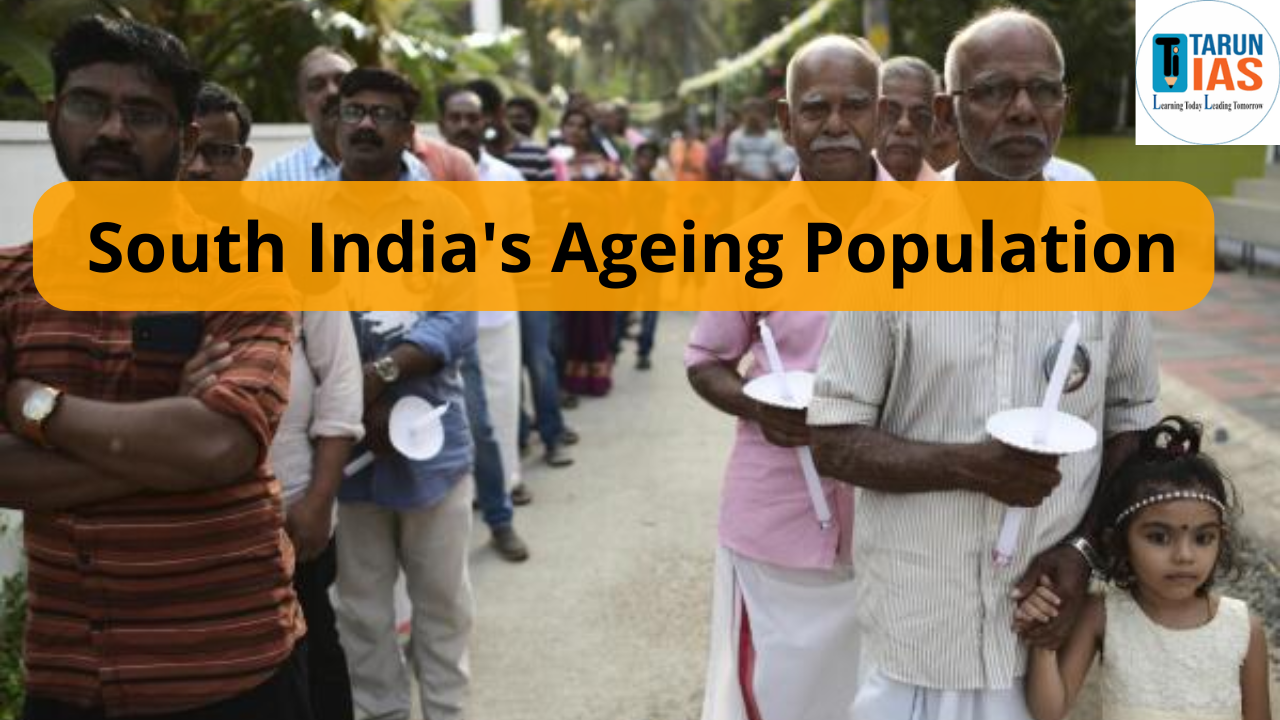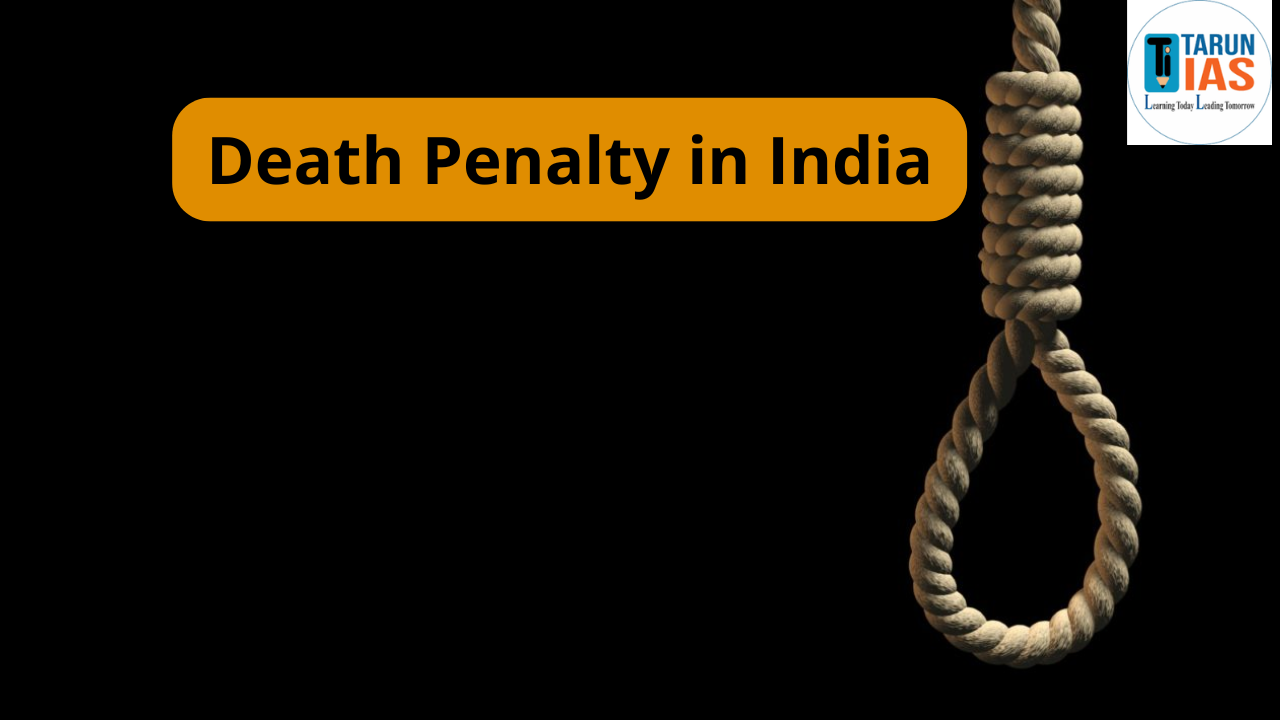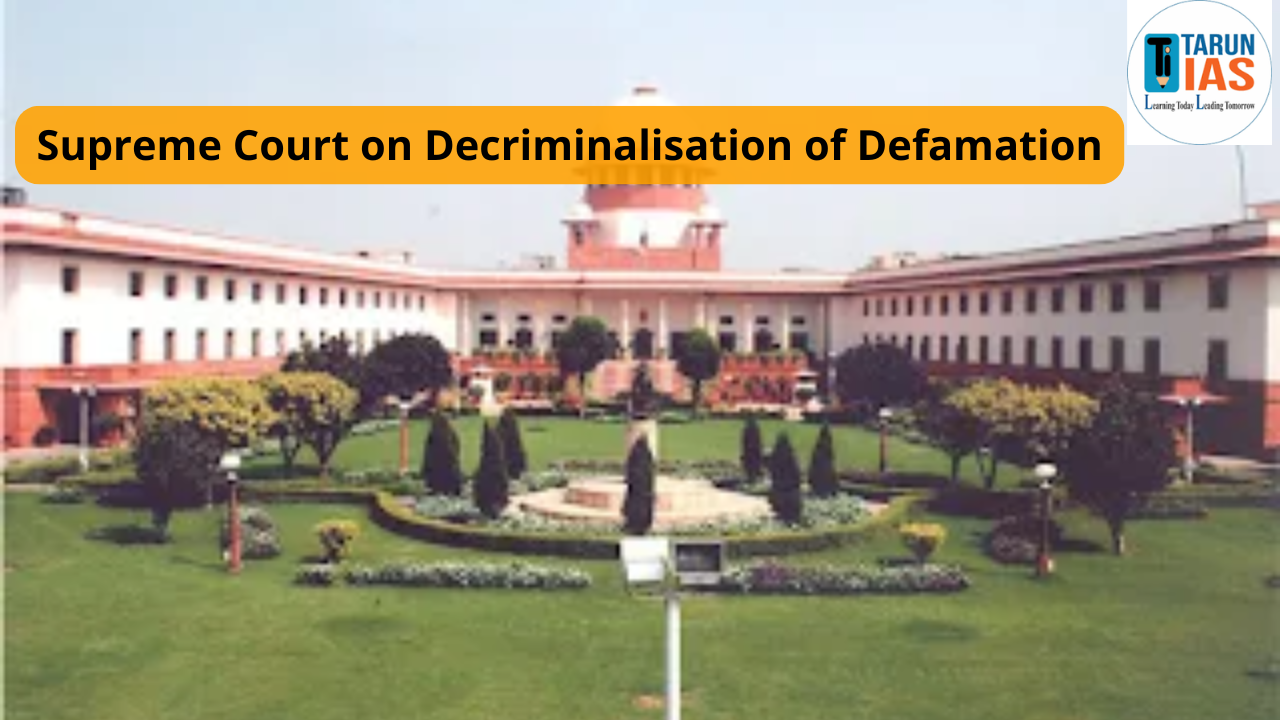South India’s Ageing Population Introduction
- South India is currently facing a pressing issue: its population is ageing rapidly while fertility rates continue to decline. Andhra Pradesh’s Chief Minister, N. Chandrababu Naidu, recently announced plans to incentivize families to have more children, reflecting the growing concern over this demographic shift.
- Southern states, already worried about losing political representation in Parliament due to smaller populations, are bracing for the potential consequences of this trend.
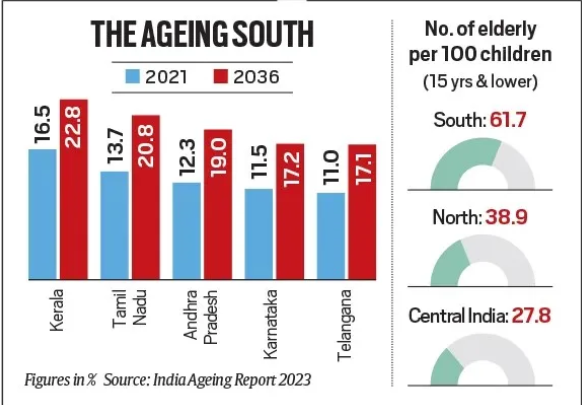
Rising Old-Age Dependency Ratio
- According to the Elderly in India 2021 report by the Ministry of Statistics and Programme Implementation (MOSPI), the old-age dependency ratio — which refers to the number of people aged 60 and above per 100 individuals aged 15-59 — is steadily increasing across the country.
- This ratio rose from 10.9% in 1961 to 14.2% in 2011 and is projected to reach 20.1% by 2031. The trend is particularly pronounced in South India, where fertility rates have declined more rapidly than in the North.
Regional Ageing Projections
- The Ministry of Health and Family Welfare (MoH&FW) has provided the latest projections on population trends, revealing significant regional variations.
- Northern states like Uttar Pradesh and Bihar are expected to maintain a younger population due to higher fertility rates.
- However, Southern states like Kerala and Andhra Pradesh will see a much more significant rise in their elderly populations.
- By 2036, Kerala’s elderly population is projected to make up 25% of its total population, whereas Uttar Pradesh will still have a relatively young demographic, with only 12% of its population aged 60 or older.
Key Data on Population Growth and Ageing (MoH&FW Report)
- India’s Population Growth: From 2011 to 2036, India’s population is expected to increase by 31.1 crore, with Northern states like Bihar, Uttar Pradesh, Maharashtra, West Bengal, and Madhya Pradesh contributing 17 crore to this growth. In contrast, Southern states will contribute only 2.9 crore (or 9%) to the overall increase.
- Doubling of the Elderly Population: The elderly population (60 years and above) will double from 10 crore in 2011 to 23 crore by 2036, raising their share of the total population from 8.4% to 14.9%.
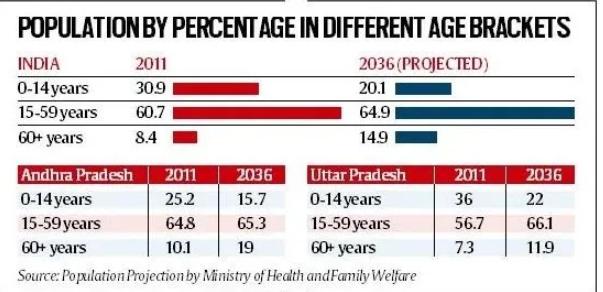
Concerns Regarding the Ageing Population in Southern States
- Economic Strain: A growing elderly population increases the dependency ratio, leading to fewer working-age individuals supporting a larger number of retirees. This demographic shift puts immense strain on state finances, as public resources are stretched to cover pensions, healthcare, and social services for the elderly.
- Decreasing Labour Productivity: As the working-age population shrinks, Southern states could face labour shortages, negatively impacting overall productivity and slowing economic growth.
- A study by the Confederation of Indian Industry (CII) noted that the scarcity of younger workers in Tamil Nadu’s industrial hubs is leading to a drop in overall productivity. This has forced many companies to look for migrant workers from Northern states, adding to the cost and logistical challenges of maintaining a competitive workforce.
- Loss of Political Representation: With lower fertility rates, Southern states risk losing parliamentary representation in future constituency delimitations, as Northern states with larger populations gain more seats. This has raised concerns about a diminishing political voice for the South in national decision-making.
- For example, Karnataka and Andhra Pradesh could lose political clout as the number of Lok Sabha seats is redistributed based on population size. The 2026 delimitation exercise is expected to benefit Northern states such as Uttar Pradesh and Bihar, which are still experiencing high population growth.
- Increased Healthcare Costs: With an ageing population comes increased healthcare demands. Southern states will need to invest heavily in geriatric care, including hospitals, nursing homes, and specialized healthcare services.
- Kerala, with one of the highest proportions of elderly citizens, has already initiated programs like the Vayomithram scheme, which offers free medical services to elderly citizens. However, the costs of running such programs are escalating, with Kerala’s healthcare budget for the elderly expected to increase by over 20% in the next decade.
- Inadequate Elderly Care Infrastructure: Many Southern states currently lack sufficient infrastructure to support their ageing population.
- For example, Andhra Pradesh and Telangana have a limited number of assisted living facilities and nursing homes compared to the growing demand.
- Kerala, despite being at the forefront of ageing population issues, has only around 550 government-run old-age homes, which is insufficient for the projected number of elderly residents by 2036.
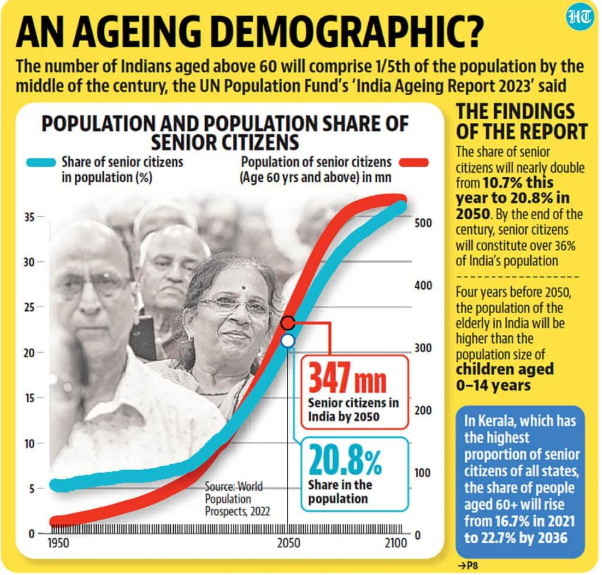
The Importance of Caring for India’s Elderly
- Harnessing Experience: The elderly possess a wealth of personal and professional experience that can benefit society. Tapping into this knowledge through proper care and social engagement can be a valuable asset.
- Generational Continuity: Elderly individuals play a vital role in providing generational continuity, especially in joint families. Their presence ensures the transmission of values, traditions, and life lessons to younger generations.
- Promoting Social Harmony: The elderly, with their deep cultural experiences, act as a buffer against intolerance and societal unrest. Their presence contributes to social harmony and stability.
- Moral Responsibility: Caring for the elderly is not just an economic or social obligation; it is a moral one. Society must reciprocate for the contributions they have made throughout their lives, ensuring that they receive the support they deserve in their later years.
Challenges Faced by the Elderly Population in India
- Social Neglect: Globalization, Western education, and the rise of nuclear families have contributed to the social neglect of the elderly, leaving many isolated and unsupported. For example, a 2018 report by Agewell Foundation found that over 50% of the elderly in India feel socially neglected and suffer from loneliness, with many having no one to talk to or care for them.
- Abuse and Exploitation: Elderly individuals often face various forms of abuse, including emotional, financial, and sometimes physical harm, further exacerbating their vulnerability. According to a 2020 HelpAge India report, nearly 16% of elderly people in India have reported experiencing abuse.
- Caste and Age Intersection: Lower-caste elderly people often have no choice but to continue working for survival, while upper-caste elders may experience a sense of ‘worthlessness’ due to the lack of suitable jobs.
- A 2016 report by the National Campaign on Dalit Human Rights (NCDHR) highlighted that many elderly Dalits in rural Tamil Nadu continue to perform physically demanding jobs for wages as low as ₹150-200 per day, as they have no access to pensions or social security benefits.
- On the other hand, elderly individuals from upper-caste backgrounds, particularly retired government officials and professionals in states like Kerala and Karnataka, often experience a loss of social status and worthlessness post-retirement. According to a 2018 study by the Indian Journal of Gerontology, many elderly Brahmin men, who once held positions of power in the government or academia, struggle with feelings of insignificance after retirement.
- Feminization of Ageing: Elderly women, particularly widows, face heightened challenges due to societal biases. According to the National Commission for Women, India is home to around 44 million widows, many of whom face social ostracization and economic hardship. exploitation, neglect, lack of access to basic services, and exclusion from asset ownership.
- Financial Instability: A large portion of India’s elderly population falls outside the pension safety net, and those receiving pensions often find them inadequate for maintaining a decent standard of living. According to the Pension Fund Regulatory and Development Authority (PFRDA), only 8% of India’s workforce is covered under pension plans, leaving a vast majority of elderly individuals financially insecure.
- Health Issues: The 2021 Longitudinal Ageing Study in India (LASI) revealed that one in five elderly individuals in India suffers from mental health issues, and 75% live with at least one chronic disease. The rising prevalence of non-communicable diseases also increases the financial burden on elderly individuals.
Way Forward
- Shift Focus from Pro-Natalist Policies: Financial incentives for larger families have had limited success worldwide. Instead, Southern states should look to the Scandinavian model, which emphasizes strong family support systems, gender equality, and comprehensive childcare provisions.
- Promote Internal Migration: Facilitating the migration of working-age individuals from Northern states to Southern states could help balance the demographic shift. This approach has been used successfully in countries like the US, where pro-immigration policies have sustained economic growth.
- Formalize the Caregiving Economy: According to a NITI Aayog report, home-based healthcare could reduce hospital costs by 20% and unnecessary hospital visits by 65%. Recognizing caregiving as formal work and improving working conditions for caregivers will be essential in addressing the growing elderly population.
- Draft Comprehensive Home-Based Care Policies: Southern states need to implement policies that formalize the caregiving sector. These should include clear training programs for caregivers, creating a registry for professionals, and establishing accountability mechanisms.
- Adopt Switzerland’s Time Bank Model: Under Switzerland’s time bank system, individuals ‘bank’ time by caring for elderly people. They can later redeem this time when they themselves need care. South India could adopt this innovative model to manage the rising elderly population sustainably.



